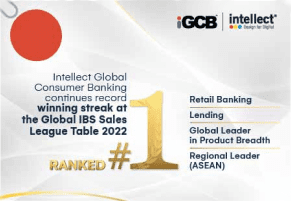Changing a bank’s core banking system while maintaining day-to-day operations is like trying to replace the engine of a moving car. The task is delicate, the competition unforgiving, and the stakes are as high as they come.
These massive transitions take months, if not years, to complete. And with technology becoming a key value differentiator, choosing the wrong system or vendor may cost you tremendous opportunity, time, money, and resource losses.
But with every vendor today offering off-the-shelf core banking solutions, each claiming to have a long list of clients and implementations worldwide, choosing the right solution that perfectly fits your bank’s requirements is not easy.
So, how do you effectively select the best-fit core banking software for your business? Well, we have compiled a list of 5 things you must consider to make that decision of choosing easier.
1. Technology and Innovation Posture
The technology strategy and vision of a core banking IT vendor say a lot about their ability to adapt to industry shifts. It will also directly affect your ability to stay competitive in such changing markets.
So, pay careful attention to their innovation posture. Ask about the R&D of their core banking software. Do they have adequate internal resources for the solution in question, or do they outsource?
Also, understand their mindset surrounding emerging technologies like AI, data analytics, and ML, specifically how keen are they to integrate these technologies into their core banking stack.
All in all, a potential vendor’s technology posture must align with your business objectives. Only then can you respond to evolving customer needs and changing trends.
2. API Exposure
Application Programming Interfaces (APIs) have become a vital component of modern core banking technology, especially when it comes to flexibility and adaptability. APIs allow you to leverage third-party solutions from your provider or other vendors to improve your service offerings and streamline customer experience.
Therefore, it’s necessary to understand vendors’ API profiles, including the number of APIs they offer, how they’re managed, and the security standards that come with them. A vendor that is proactive in adopting APIs and open banking standards can help you stay competitive in the market and provide the best user experience.
Apart from core banking functions, an open banking solution can open exciting opportunities like Banking as a Service (BaaS), where you can lend your banking capabilities to other financial institutions. All in all, a good vendor inclined with an open ecosystem can also help your bank grow.
3. Customer Support
Effective support is critical because it ensures any issues that arise are addressed quickly, minimising downtime and enabling your bank to maintain uninterrupted service.
Start with investigating the vendor’s approach to measuring the effectiveness and availability of their customer support. Inquire about their metrics for customer satisfaction and the procedures they have in place for tracking and resolving support inquiries. It’s important to understand how they manage and learn from customer feedback.
To better assess the quality of support, consider reaching out to some of the vendor’s current clients. This direct feedback can offer insights into what your experience might be like with the vendor’s core banking solution and help you make a qualitative judgment. After all, a long-term relationship with a vendor is predicated not just on the technology provided but also on the quality of support offered. A good vendor will willingly provide you with a list of satisfied customers for reference. However, hesitancy to provide such references can be considered a red flag.
4. Contract Terms
When it comes to vendor contracts, specificity is the lifeline of a conducive partnership. A clear and detailed agreement is essential for a smooth and hiccup-free implementation. Resources, timeframe, deliverables, costs, and dependencies – you must ensure all these are articulated clearly in the vendor agreement. Also, make sure you incorporate all documents and commitments discussed during the evaluation phase into the contract. This ensures that all parties have the same understanding and expectations moving forward and reduces the likelihood of future disputes. Ultimately, a well-defined contract will be a reference point throughout the core banking solution’s implementation process.
5. Pricing
At the end of the day, choosing a core banking IT vendor is a business decision. And where there is business, there are costs.
So, when comparing vendors, it’s vital to calculate the Total Cost of Ownership (TCO). And this doesn’t just include software licensing and implementation; you must also consider internal resource costs, hardware, network upgrades, and training.
Simply put, ensure all potential expenses are accounted for to avoid surprises. Align payment terms directly with deliverables to maintain clear financial expectations and reinforce vendor accountability.
Over to You
Choosing the right vendor for your core banking solution is a laborious process involving long conversations with consultants, providers, and peers. But asking the right questions along the way will significantly shorten the process and help you find a partner that provides the support and technology you need.
Or, you could take the shorter route and choose iGCB’s Digital Core as your core banking software. Our cloud-native approach to banking allows you to scale, improve, and innovate processes and provide a contextual experience to your customers. Driven by state-of-the-art AI models, 285+ Microservices, and 1200+ APIs, we un-complicate and un-bundle banking for you, making it easy for you always to stay ahead of the curve.
Choose our award-winning core banking software today and leverage our 35+ years legacy in simplifying banking. Learn more about Digital Core here.
Author:
iGCB Marketing



